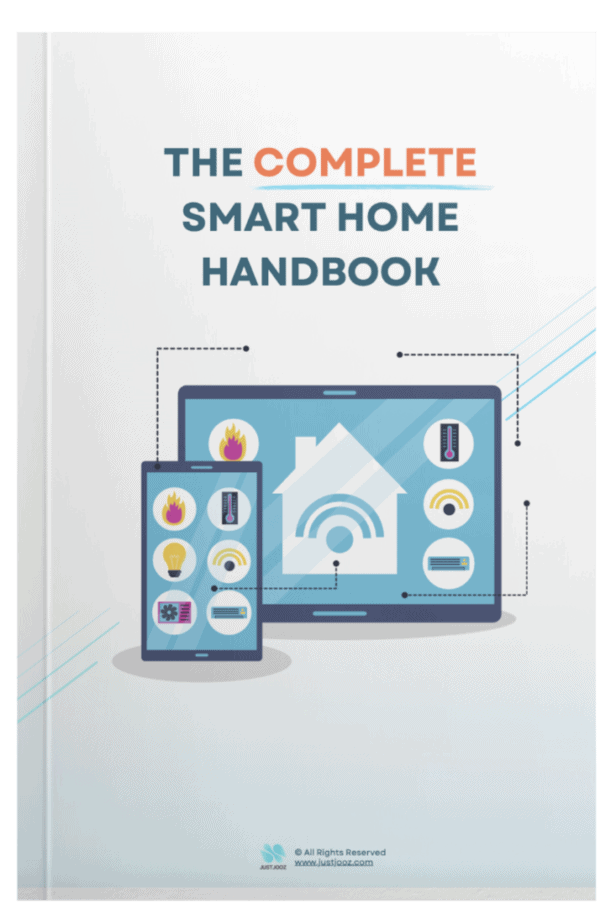How to Lower Humidity in House: 17 Best Ways!
We’re reader-supported; we may earn a commission from links in this article.
Living in a humid environment can be downright uncomfortable and can also cause some health issues.
Trust me, I live in a tropical climate with extremely high humidity all year round!
If you are looking for ways to reduce the humidity levels in your home, you have come to the right place.
In this article, we will discuss some practical ways that you can lower the humidity in your house.
Keep reading for more information!
How to Lower Humidity in House?
There are a few things that you can do to reduce the humidity in your house.
Here are some practical tips:
1) Use an Air Conditioner or a Dehumidifier

If you want to lower indoor humidity levels, one of the best things that you can do is to use an air conditioner or a dehumidifier.
Both devices work by removing moisture from the air, which will help to reduce the humidity in your home.
Air conditioners and dehumidifiers can be purchased from most home improvement stores.
If you live in a humid climate, you may need to use either device all year round in order to keep the indoor humidity levels under control.
One downside is that running an air conditioner or dehumidifier can also add to your energy bills.
If you are worried about the cost, consider investing in energy-efficient air conditioning systems! In the long run, it will save you money!
Air conditioning systems are great for dealing with hot and humid climates. They work by both reducing excess humidity and cooling your home down – a great saving grace during the summers!
Another option is to use a whole-house dehumidifier, which can be installed by a professional.
A whole-house dehumidifier will remove moisture from the air throughout your entire home, not just one room.
The key here is to achieve an ideal indoor humidity level that not only feels comfortable but also allows for proper ventilation.
If you are looking for a long-term solution to reducing the indoor humidity levels in your house, a whole-house dehumidifier is a great option.
You should also look for dehumidifiers that have high energy efficiency and have an air filter, which can improve indoor air quality.
Keep in mind that whole-house dehumidifiers can be quite expensive, so this may not be an option for everyone.
2) Ventilate Your Home Well
Another way to reduce the humidity levels in your house is to ventilate your home.
Opening windows and doors will help to improve air circulation and will also allow any humid air to escape.
If you have an exhaust fan in your bathroom, make sure to turn it on after you shower in order to remove any humid air.
You should also consider running a fan in your home, which will help in circulating the air and reducing humidity.
If you have ceiling fans, make sure to turn them on as well!
In addition to ventilating your home, you should also avoid using any appliances that produce moisture and cause moisture buildup too often.
This includes things like clothes dryers, ovens, and dishwashers.
If you need to use these appliances, make sure to ventilate your home afterward in order to remove any humid air.
Ventilating your home is a great way to reduce the humidity levels without having to spend any money!
3) Consider Taking Shorter Showers to Prevent Excess Moisture
Taking shorter showers can surprisingly prevent excess humidity in your home!
Showering produces a lot of humid air, so by taking shorter showers, you can help to reduce the humidity levels in your home.
In addition to taking shorter showers, you should also make sure to turn on the exhaust fan while you are showering in order to remove any humid air.
Taking shorter showers is a great way to reduce the excess moisture in your house without making any significant changes!
4) Open up the Bathroom Door After Showering to Let the Steam Escape
After you take a shower, make sure to open up the bathroom door in order to allow any steam to escape.
If you keep the door closed, all of the humid air will stay in the bathroom, which will increase the humidity levels in your house.
Opening up the door after showering is a small change that can make a big difference!
If you’re keeping all that humidity in your bathroom, you might want to get a humidifier for your bathroom. This will help deal with it, plus give you some extra water you can use to mop the floor!
5) Use Exhaust Fans When Cooking or Doing the Laundry
Another great way to reduce the humidity levels in your house is to use exhaust fans when cooking or doing the laundry.
Both of these activities produce a lot of humid air, so by using an exhaust fan, you can help to remove some of that humid air and keep the humidity levels under control.
If you don’t have an exhaust fan in your kitchen or laundry room, make sure to open a window while you are cooking or doing the laundry in order to allow any humid air to escape.
6) Keep Houseplants to a Minimum
If you have a lot of houseplants, you might want to consider reducing the number that you have.
While plants are great for improving air quality, they can also increase the humidity levels in your home.
So, if you have a lot of plants, it might be contributing to the high humidity indoors!
Reducing the number of plants in your home is a great way to reduce the humidity levels without having to get rid of all of your plants.
And if you really don’t want to get rid of any of your plants, there are some types of plants that actually help to reduce humidity levels! (Snake plants and Boston ferns)
So, if you have a lot of plants in your house, consider reducing the number that you have or getting some plants that actually help to reduce humidity levels.
7) Reduce Humidity Levels With Salt Lamps, Beeswax Candles, or Bowl of Dry Rice
There are a few other things that you can do in order to reduce the humidity levels in your house.
One option is to get a salt lamp, which will help to absorb moisture from the air.
Another option is to burn beeswax candles, which also help to absorb moisture from the air.
Or, you can place a bowl of dry rice in your home, which will help to absorb excess moisture from the air.
8) Store Firewood Outside and Away From Your Home
If you have firewood, make sure to store it outside and away from your house.
Firewood can actually increase the humidity levels in your home, so it’s best to keep it stored outside.
Plus, storing firewood outside will help to keep your house clean and free of pests!
Firewood is also commonplace for mold growth and should be kept outside in a shed.
You don’t want any of those nasty microorganisms and fungi to grow in your home from the humid air!
9) Inspect Your Home for Leaks and Repair Them Immediately
One of the most important things that you can do to reduce the humidity levels in your house is to inspect it for leaks and repair them immediately.
Leaks can actually cause a lot of humid air to enter your home, which will increase the humidity levels.
So, if you have any leaks in your home, make sure to repair them as soon as possible!
By setting up a regular schedule to check for leaks, you will keep the humidity levels under control and make your home more comfortable.
10) Use a Hygrometer to Monitor the Humidity Levels in Your Home
A hygrometer is a device that measures the amount of water vapor in the air.
By using a hygrometer, you can monitor the humidity levels in your home and make sure that they stay at a comfortable level.
11) Take Advantage of Cooler Weather and Open the Windows
One of the best ways to reduce the humidity levels in your house is to take advantage of cooler weather and open the windows.
When it’s cool outside, the air inside your home will be less humid than when it’s hot outside.
So, if you can, open the windows during cooler weather and allow the less humid air to come into your home.
12) Don’t Hang Your Clothes Up to Dry Indoors
Hanging your clothes up to dry indoors can actually increase the humidity levels in your home.
The moisture from your clothes will evaporate into the air, which will make the air more humid.
So, if possible, try to hang your clothes up to dry outside or in a laundry room.
13) Don’t Boil Water on the Stove
Boiling water on the stove can actually release a lot of steam into the air, which will increase the humidity levels in your home.
So, if possible, try to avoid boiling water on the stove in order to reduce the humidity levels in your home.
14) Ventilate Your Home
Ventilating your home can actually help to reduce the humidity levels.
The ventilation will help to remove moisture from the air and make the air less humid.
So, if you can, try to ventilate your home in order to reduce the humidity levels.
15) Reduce Your Use of Water-Using Appliances
If you want to reduce the humidity levels in your home, then you should try to reduce your use of water-using appliances.
Water-using appliances can actually release a lot of moisture into the air, which will increase the humidity levels.
So, if possible, try to reduce your use of water-using appliances in order to reduce the humidity levels in your home.
16) Keep Your Home Clean and Dust-Free
Keeping your home clean and dust-free can actually help to reduce the humidity levels.
Dust can actually absorb moisture from the air, which will make the air more humid.
So, by keeping your home clean and dust-free, you can actually help to reduce the humidity levels.
17) Seal Any Cracks or Gaps in Your Home
If you have any cracks or gaps in your home, then you should try to seal them in order to reduce the humidity levels.
The cracks and gaps can allow moisture to enter your home, increasing the humidity levels.
So, if you have any cracks or gaps in your home, try to seal them in order to reduce the humidity levels.
How to Measure Indoor Humidity Levels?
Measuring indoor humidity levels is important for maintaining a comfortable and healthy living environment. Here are some ways to measure indoor humidity levels:
1. Hygrometer
A hygrometer is a device specifically designed to measure humidity levels in the air. It can be purchased at most hardware or home improvement stores.
2. Smart Thermostat
Some smart thermostats have built-in humidity sensors that can monitor indoor humidity levels and adjust the heating/cooling system accordingly.
3. DIY Method
You can also create your own DIY method by placing a few ice cubes in a glass and leaving it on a flat surface for five minutes. After five minutes, check the glass for condensation. If there is condensation on the outside of the glass, then your indoor humidity level is high.
By regularly monitoring indoor humidity levels, you can make adjustments to maintain a comfortable and healthy living environment.
What causes high humidity in house?
There are several factors that can cause high humidity levels in a house, including:
1. Poor Ventilation
If there is not enough air circulation in your home, moisture can build up and lead to high humidity levels.
2. Weather Conditions
High humidity can be caused by outside weather conditions, such as heavy rain or high temperatures.
3. Water Leaks
Leaks from pipes, roofs, or windows can introduce extra moisture into your home and cause high humidity levels.
4. Everyday Home Activities
Certain everyday activities such as cooking, showering, and doing laundry can release moisture into the air and increase indoor humidity levels.
5. Overwatering Plants
Overwatering plants can also contribute to high indoor humidity levels.
By identifying the cause of high indoor humidity levels, you can take steps to reduce it and maintain a comfortable living environment.
What happens if humidity is too high in house?
If the humidity in a house is too high, it can lead to a number of issues such as mold growth, musty odors, and damage to furniture and other household items.
High humidity levels can also make the air feel warmer than it actually is, leading to discomfort and increased energy bills from running air conditioning units more frequently.
It’s important to monitor indoor humidity levels and take steps such as using dehumidifiers or increasing ventilation to keep them within a healthy range.
Does opening windows reduce humidity?
Opening windows can help to reduce humidity in a house if the outdoor air is drier than the indoor air.
However, if the outdoor air is more humid than the indoor air, opening windows can actually increase humidity levels.
It’s important to monitor both indoor and outdoor humidity levels before deciding whether or not to open windows for ventilation.
In some cases, using a dehumidifier or increasing ventilation through other means such as exhaust fans may be a better option for reducing indoor humidity.
Final Thoughts
By following these tips, you can easily reduce the humidity in your house and make it more comfortable for everyone.
We hope you found this article helpful. If you have any further questions, please feel free to reach out to us and we would be happy to help!
Thank you for reading and happy dehumidifying! 😉

Justin Chia
Justin is the author of Justjooz and is a data analyst and AI expert. He is also a Nanyang Technological University (NTU) alumni, majoring in Biological Sciences.
He regularly posts AI and analytics content on LinkedIn, and writes a weekly newsletter, The Juicer, on AI, analytics, tech, and personal development.
To unwind, Justin enjoys gaming and reading.






